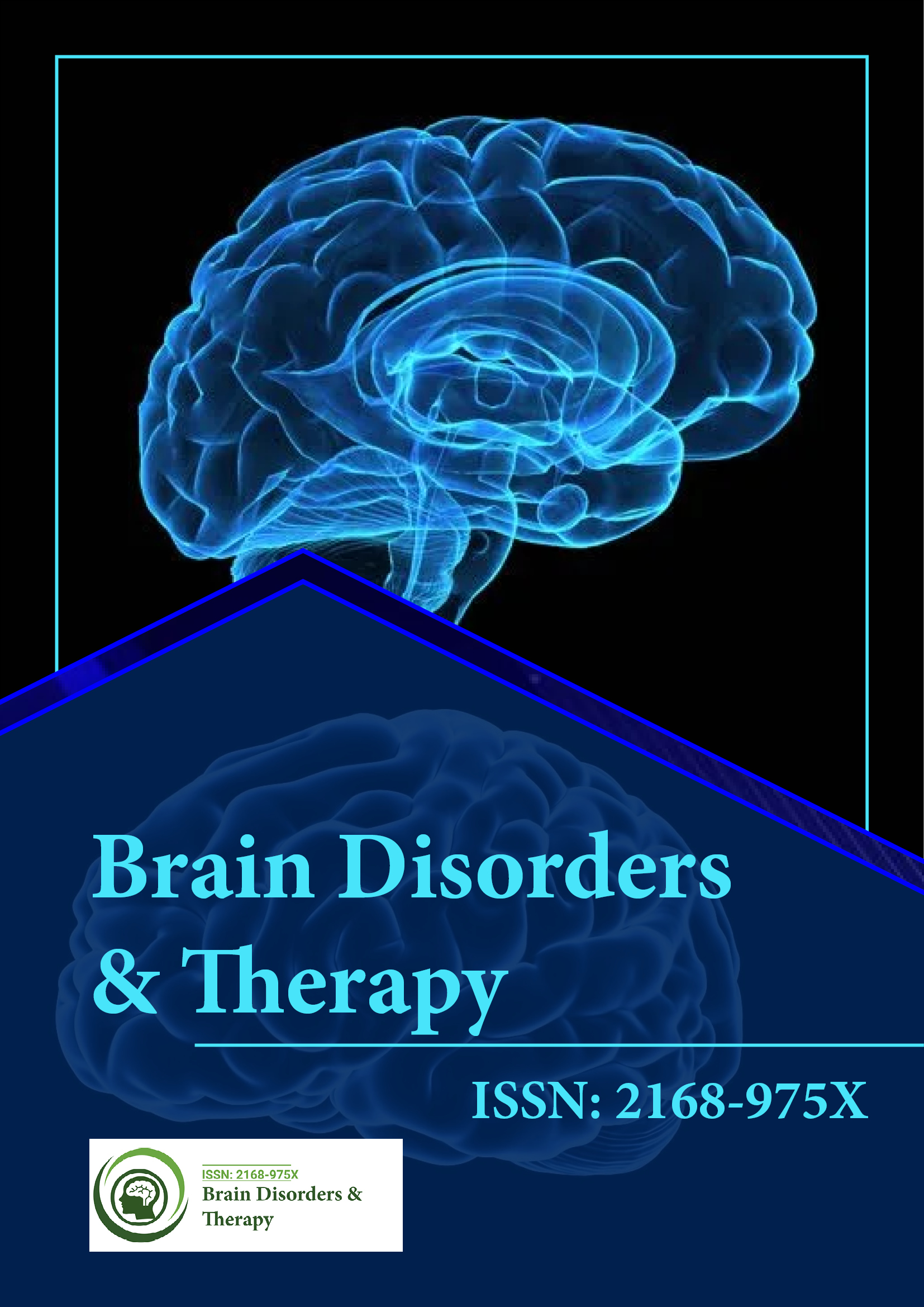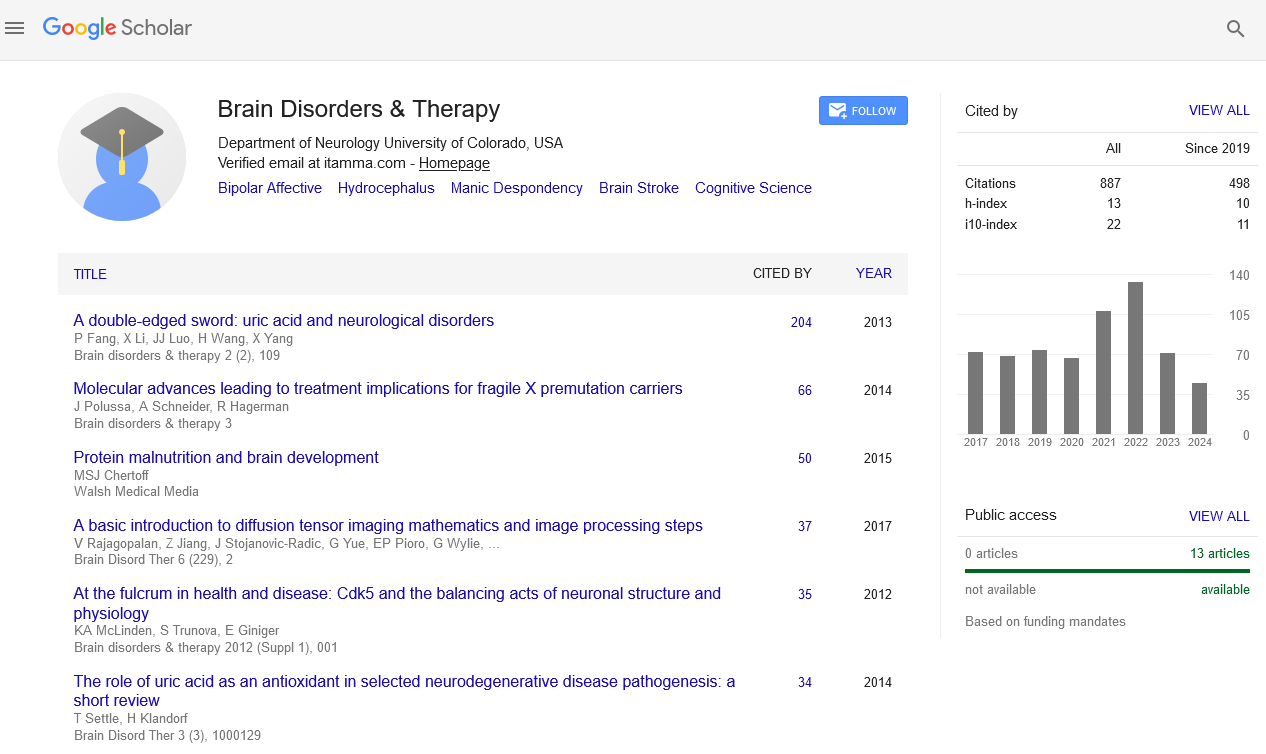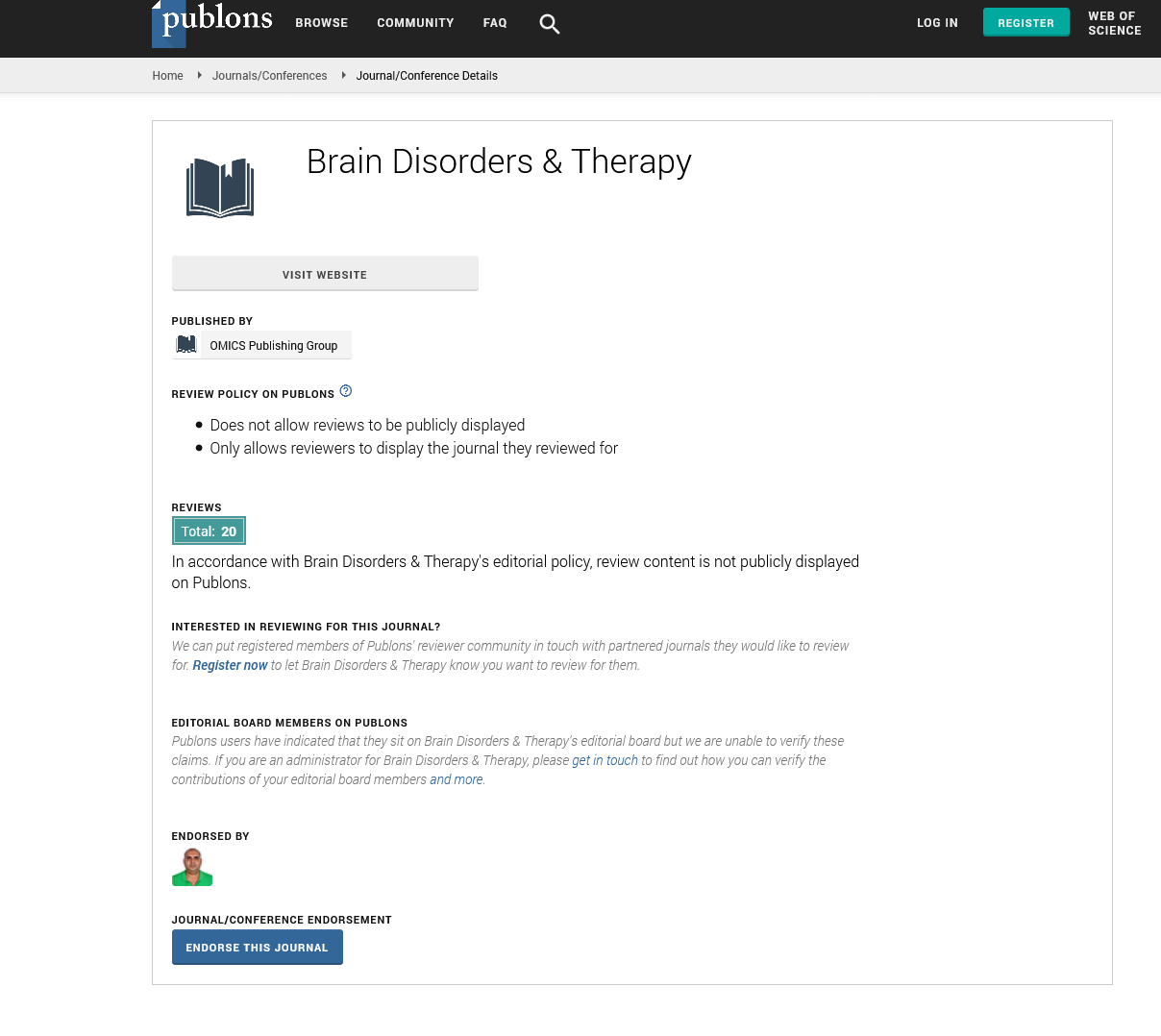Indexed In
- Open J Gate
- Genamics JournalSeek
- JournalTOCs
- RefSeek
- Hamdard University
- EBSCO A-Z
- OCLC- WorldCat
- Publons
- Geneva Foundation for Medical Education and Research
Useful Links
Share This Page
Journal Flyer

Open Access Journals
- Agri and Aquaculture
- Biochemistry
- Bioinformatics & Systems Biology
- Business & Management
- Chemistry
- Clinical Sciences
- Engineering
- Food & Nutrition
- General Science
- Genetics & Molecular Biology
- Immunology & Microbiology
- Medical Sciences
- Neuroscience & Psychology
- Nursing & Health Care
- Pharmaceutical Sciences
Opinion Article - (2024) Volume 13, Issue 4
Ketamine's Impact on Brain Networks: Dopamine System Mapping and Implications
Jing Gong*Received: 22-Nov-2024, Manuscript No. BDT-24-27655; Editor assigned: 25-Nov-2024, Pre QC No. BDT-24-27655(PQ); Reviewed: 09-Dec-2024, QC No. BDT-24-27655; Revised: 16-Dec-2024, Manuscript No. BDT-24-27655(R); Published: 23-Dec-2024, DOI: 10.35248/2168-975X.24.13.282
Description
Ketamine, a dissociative anesthetic once primarily used in medical settings, has garnered significant attention in recent years for its potential therapeutic effects, particularly in treating treatment-resistant depression and other mood disorders. While its mechanisms of action are still being explored, recent studies using advanced neuroimaging techniques, including whole-brain mapping, have begun to shed light on how ketamine influences brain networks, particularly the dopamine system. Dopamine, a neurotransmitter associated with reward, motivation and mood regulation, plays a central role in the brain’s response to substances like ketamine. Whole-brain mapping has revealed that ketamine’s effects on the dopamine system are not uniform across the brain and this divergent impact may explain both its therapeutic potential and its potential for abuse.
Dopamine is a important neurotransmitter that influences a wide range of brain functions, from motor control to cognitive processing and emotional regulation. It is particularly wellknown for its role in the brain's reward system, where it contributes to feelings of pleasure and reinforcement. Dysregulation of dopamine systems has been implicated in several psychiatric disorders, including depression, schizophrenia and addiction.
Ketamine, originally developed as an anesthetic, has been found to produce rapid antidepressant effects, especially in patients who have not responded to traditional therapies. The substance is thought to exert its effects through multiple mechanisms, one of the most significant being its interaction with glutamate receptors, specifically the NMDA (N-methyl-D-aspartate) receptors. However, the interaction between ketamine and the dopamine system is complex, with evidence suggesting that it has a varied and dose-dependent impact on dopamine release across different brain regions.
Whole-brain mapping is an advanced neuroimaging approach that provides a comprehensive view of brain activity across the Magnetic Resonance Imaging (fMRI) and Positron Emission Tomography (PET), researchers can observe changes in blood flow, metabolic activity and neurotransmitter systems in response to stimuli or pharmacological agents like keta mine.
By using whole-brain mapping techniques, scientists have been able to identify specific brain regions where ketamine exerts its effects on dopamine signaling. These studies have revealed a complex and divergent impact on the dopamine system, where ketamine can increase dopamine release in some areas of the brain while decreasing it in others. This divergence may help explain both the positive and negative effects of ketamine, including its potential for antidepressant effects and its abuse potential.
Research using whole-brain mapping has demonstrated that ketamine has a heterogeneous effect on the dopamine system. One of the most significant findings is that ketamine increases dopamine release in areas of the brain associated with motivation and reward, such as the prefrontal cortex and striatum. These brain regions are important for cognitive flexibility, decision-making and the processing of rewarding stimuli. Ketamine’s ability to enhance dopamine signaling in these regions may contribute to its rapid antidepressant effects by improving mood and motivation, particularly in individuals with treatment-resistant depression.
On the other hand, ketamine has also been shown to decrease dopamine activity in other brain regions, such as the limbic system, which is involved in emotional regulation and fear processing. This reduction in dopamine signaling could contribute to the dissociative and sometimes hallucinogenic effects of ketamine, which may be linked to the drug’s abuse potential. The ability of ketamine to modulate dopamine levels in different parts of the brain in such a differential manner suggests that it operates as a complex neuromodulator, with its effects being highly dependent on the specific brain regions and networks involved.
Conclusion
Functional brain mapping using depth electrodes is a powerful technique that bridges the gap between research and clinical practice. By providing high-resolution recordings from deep brain structures, this approach has advanced our understanding of neural function and offered new avenues for diagnosing and treating neurological disorders. As technology and analytical methods continue to evolve, depth electrode-based mapping is poised to play an even greater role in uncovering the complexities of the human brain, contributing to both scientific discovery and improved patient care.
Citation: Gong J (2024). Ketamine’s Impact on Brain Networks: Dopamine System Mapping and Implications. Brain Disord Ther. 13:282.
Copyright: © 2024 Gong J. This is an open-access article distributed under the terms of the Creative Commons Attribution License, which permits unrestricted use, distribution, and reproduction in any medium, provided the original author and source are credited.


